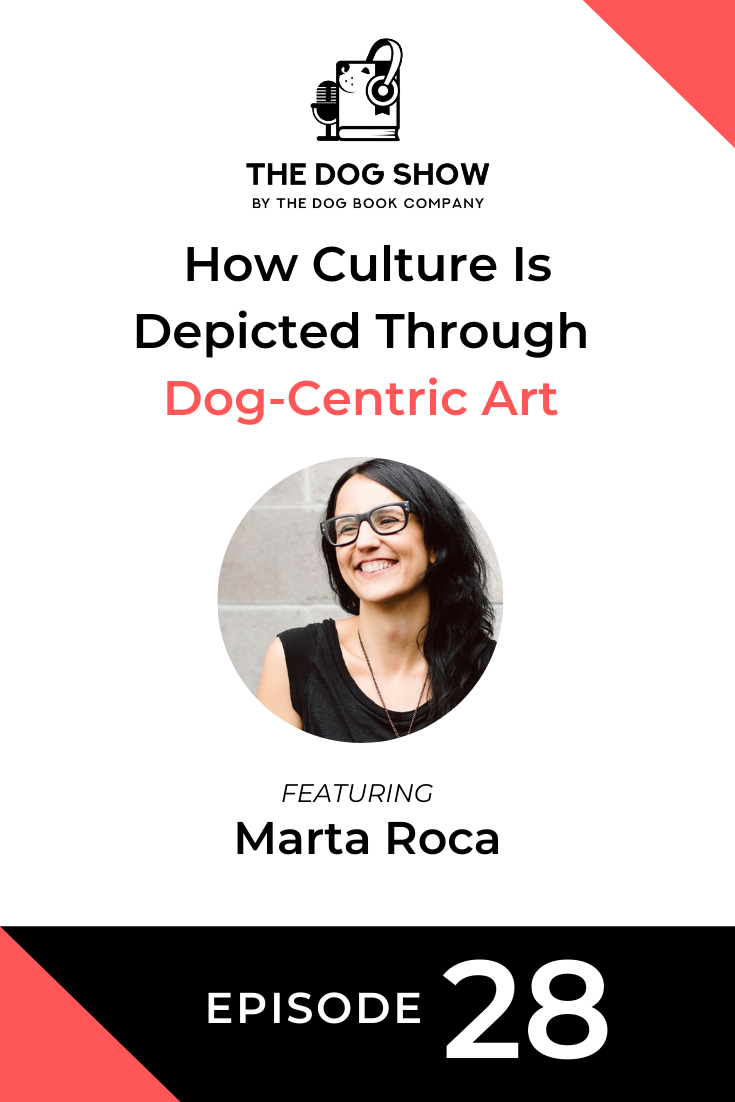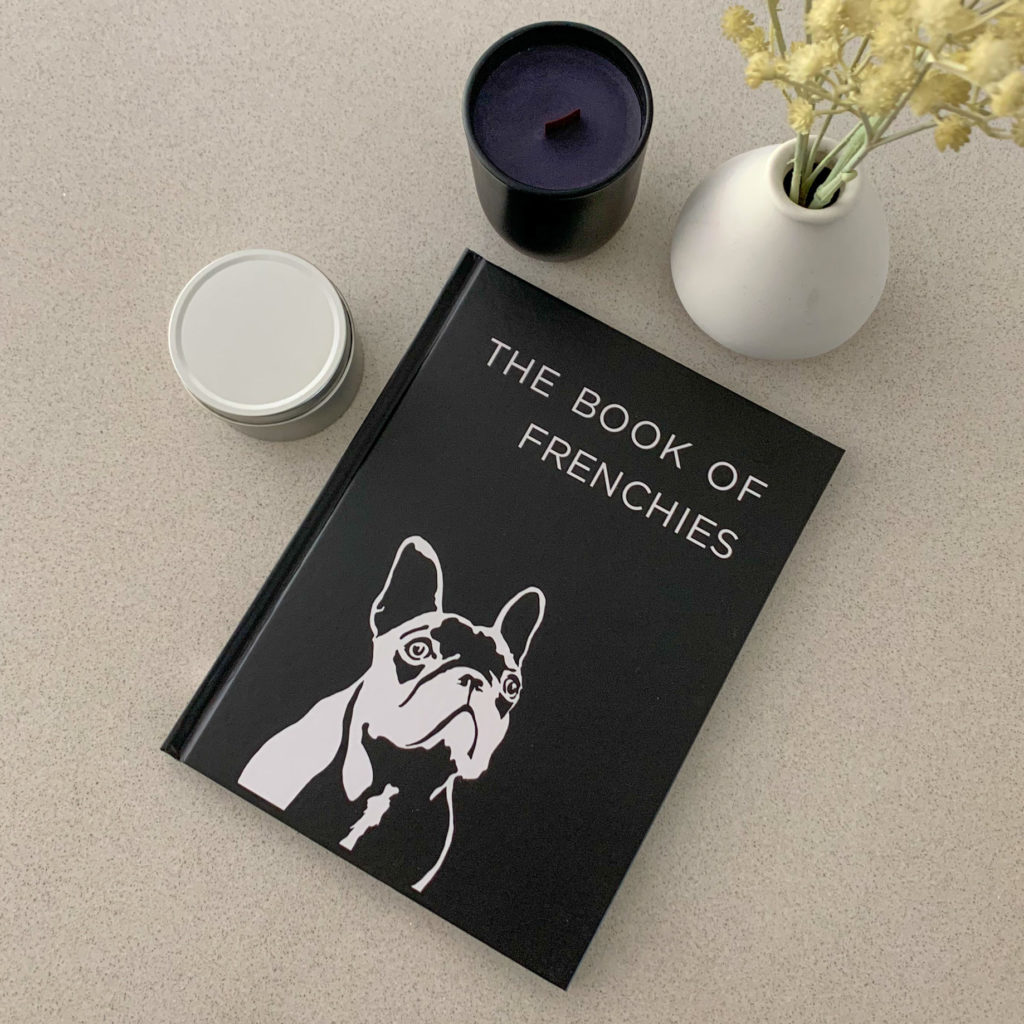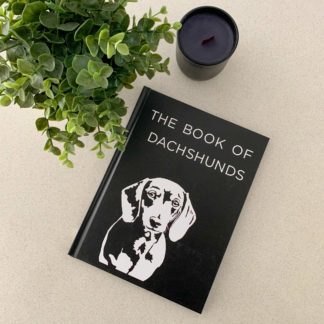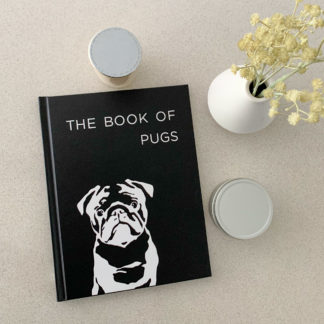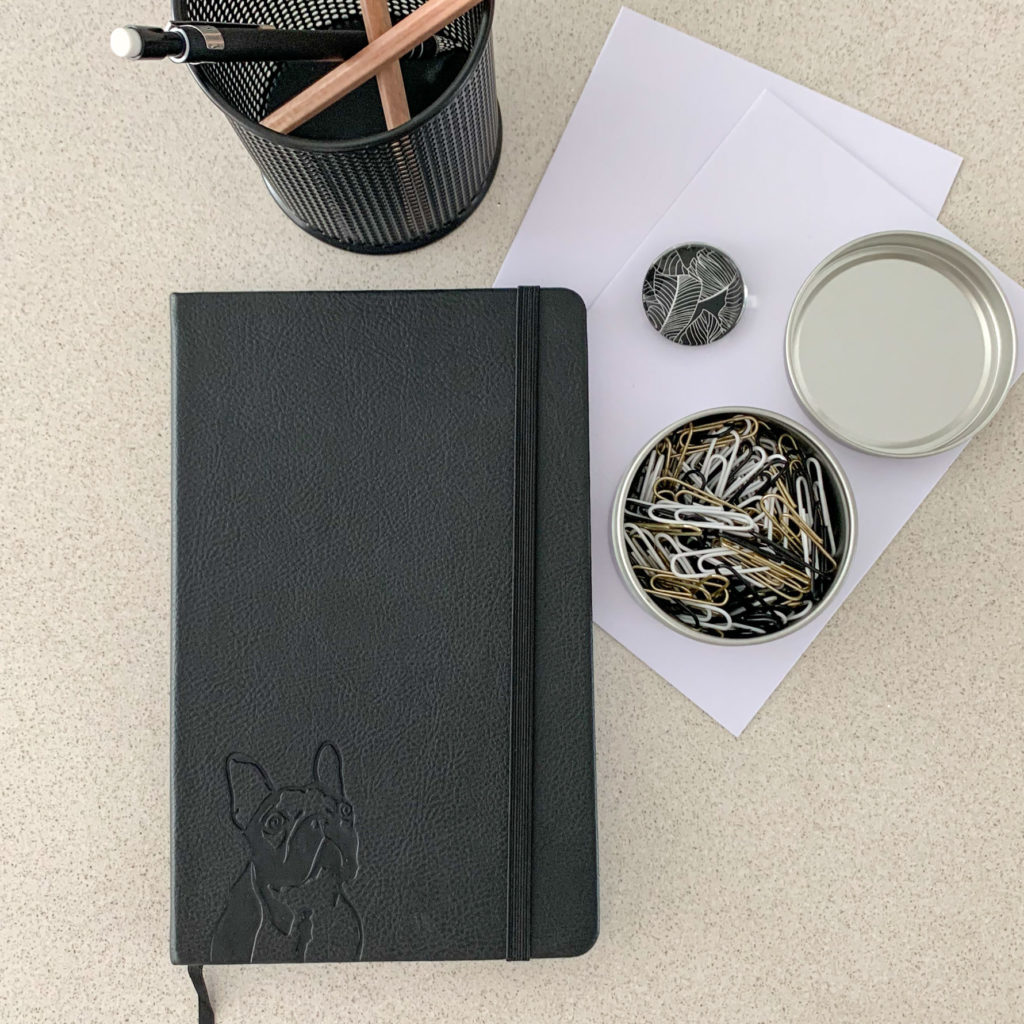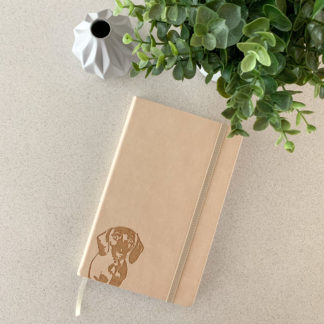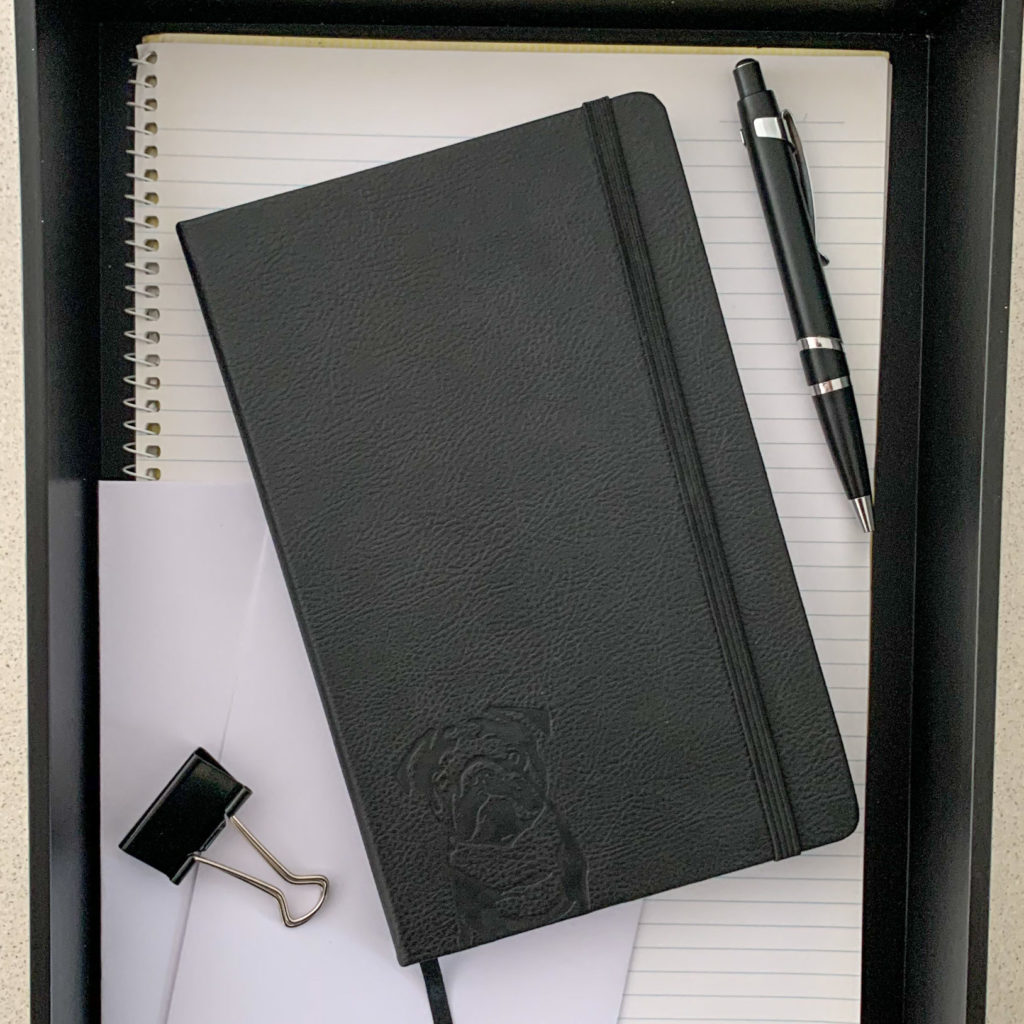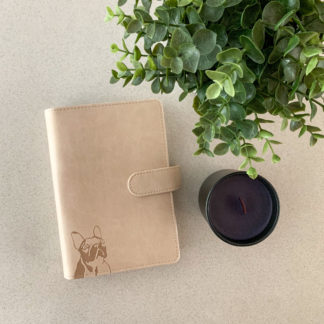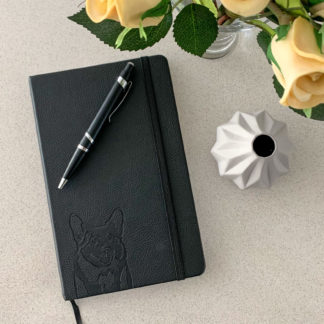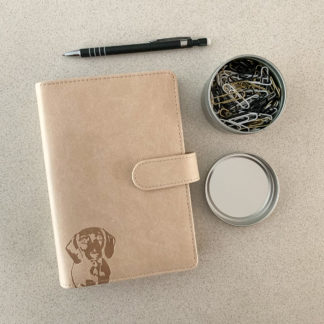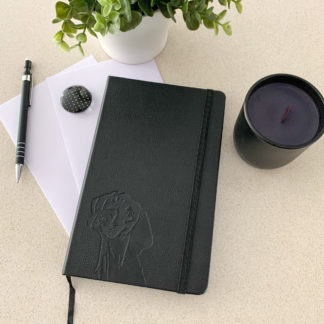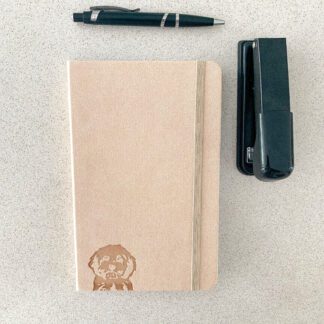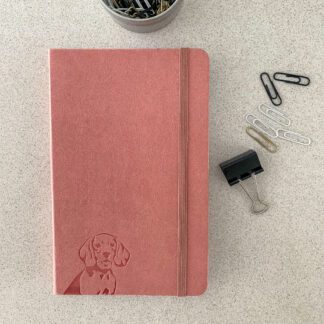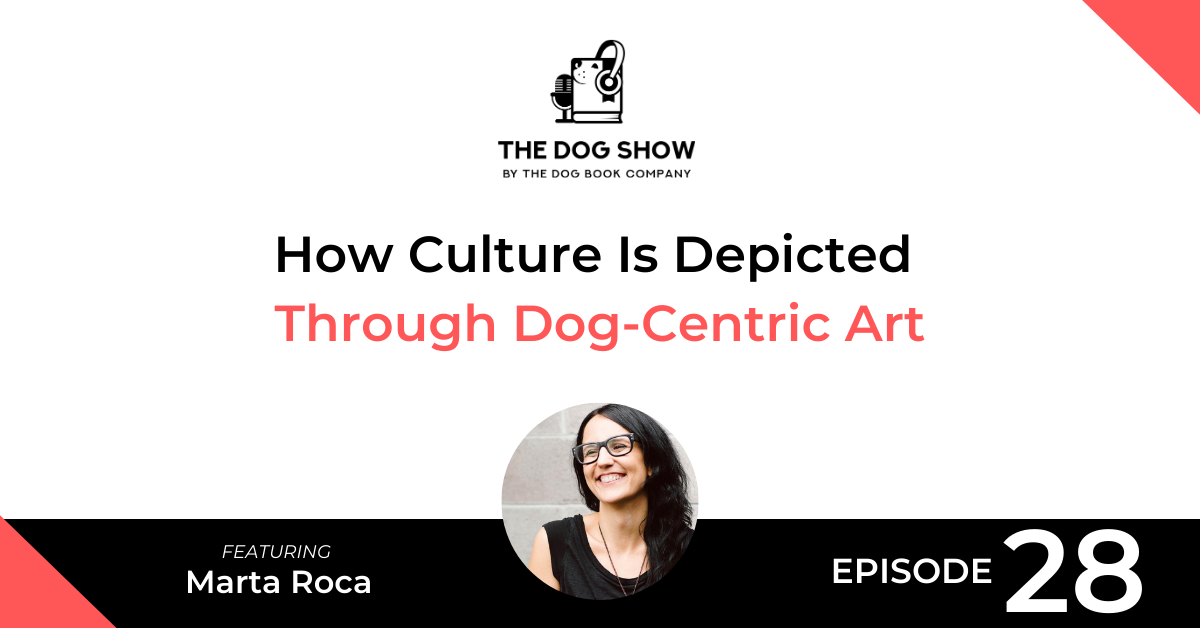
Throughout history, dogs have played many roles – from comrades-in-arms to companions at our heels. Four&Sons have added muse to that list.
Established in 2013, Four&Sons is the first and only print and online publication dedicated to dog-centric art, culture, and lifestyle. Chronicling the work of interesting people and their interesting dogs, Four&Sons is a guided tour through the worlds of art, photography, music, design, literature – even maths – as inspired by man’s best friend.
This episode of The Dog Show features Marta Roca. Marta is the founder of Four&Sons.
In the interview, we talk about dogs in art, what they symbolize, how they depict cultural generations, and how Marta harnesses a dog’s magic powers to tell stories of art and culture at Four&Sons.
Find out more about Four&Sons here:
Use the code DOGSHOW to get 20% off at Four&Sons now!
Listen
Watch
Read
Will: This episode of “The Dog Show” features Marta Roca. Marta is the founder of Four & Sons. Throughout history, dogs have played many roles from comrades-in-arms to companions at our heels. Four & Sons have added muse to that list. Established in 2013, Four & Sons is the first and only print and online publication dedicated to dog-centric art, culture, and lifestyle. Chronicling the work of interesting people and their interesting dogs, Four & Sons is a guided tour through the worlds of art, photography, music, design, literature, even maths, as inspired by man’s best friend. In the interview, we talk about dogs in art, what they symbolize, how they depict cultural generations, and how Marta harnesses a dog’s magic powers to tell stories of art and culture at Four & Sons. Marta, welcome to “The Dog Show” today. Thank you so much for coming on.
Marta: Oh, thanks for having me. It’s going to be fun.
Will: It’s going to be lots of fun, actually. We were just having a chat before we started recording, and I had to stop you because all the things you were saying were so interesting and it’s a very different conversation than what I’ve had with anyone else before, so I’m really excited to have a chat with you today. I guess I usually start by asking my guests about their dogs, but from what I understand, you don’t have a dog of your own, which is interesting for someone that has a brand all about dogs, but I’d like to hear about what your favorite dog breed is.
Marta: I have to think about this one because it kind of changes, and I think it’s because I live vicariously so much through the magazine that I fall in and, not out of love, but I fall especially in love with a breed depending of what we’re working with. But if I had to choose one, it would have to be a beagle. Maybe it’s because of this Snoopy, you know, like that’s one of my first dog loves. Maybe it’s because it’s super curious, which is something I kind of relate to. I like the stubbornness as well, eats a lot. I love food. So, I don’t know. It’s like I find them super cheeky. So, yes, but, I mean, seriously, it’s super hard to really choose the one, but…
Will: Yeah, I don’t know. I have a lot to do with beagles, but I do love the way they look. They’re beautiful-looking dog, the big floppy ears and all that kind of stuff is very iconic, right? So…
Marta: Yes, exactly. It’s a very doggy dog. Yeah.
Will: Yeah, absolutely. So, where do you then draw your inspiration for your creative work? Where do you draw that inspiration from if you don’t have a dog of your own? Is it other people dogs? Are you on Instagram? Where are you drawing that inspiration from?
Marta: Well, in fact, I mean, without wanting to get too heavy too early in the conversation, I fell in love with the whole idea of dog as a kind of, like, it’s the bond that humans we have with dogs that fascinates me. Like, that’s the thing that keeps me engaged and it keeps me trying to understand. So, it is sort of dogs to me represent a lot of universal truths, you know, like when you start working with a concept of dogs from a creative point of view, very quickly you just fall into conversations about the big things in life like trust, and loyalty, and companionship. And so, all of that is just that we channel it from a creative point of view with a bit of a creative lens, but really the inspiration comes from this connection, the human connection between dogs and us and how we just seem to have this super strong bonds that are sort of hard to explain but very easy to feel. So, that’s where the inspiration come from, from all this kind of wonderful magic that happens between these two species. Yeah.
Will: I love how you put that, and it’s something that I hadn’t thought a lot about before, but obviously, there’s this kind of innate connection that, like, dog lovers have with dogs, especially their own dogs. And while you could…all those words you use like companionship, and trust, and all of that, I guess are the simple ways to describe it. There’s so much complexity as well.
Marta: Exactly. Exactly. And that is how the magazine has been evolving because every time we sort of feel that, okay, we got it, we understand it now, like, someone, especially like first experience will come and bring a whole different perspective into this. And I think that creativity, and art, and photography are such great platforms to explore all of this, and helps put things into maybe not words, but even like just, yeah, experiences. So, culture, and art, and creativity, I like, yeah, like a really nice way to explore all of these great concepts. And, you know, dogs are beautiful. So, from a visual point of view, they just make it absolutely fabulous for anyone who’s got a creative to be able to explore those things.
Will: Yeah. I guess it’s a little bit cheesy, but a picture really does tell 1,000 words, right? I mean, art and culture and the way you represent those things can tell more of a story than just words themselves. So, with Four & Sons, I’m not going to be able to give it justice by talking on a podcast, but there’s some amazing blend of art, and culture, and dogs, and everything that you are doing. I mean, if someone just goes to your Instagram page or your website, it’s very impactful, immediately impactful. Where did it all start, and what got you into this industry?
Marta: I was talking with a really good friend of mine who, she is actually the godmother of the project, for use of a better word. She is super passionate about dogs. She is…like, at the time, she had a gorgeous, gorgeous poodle called Walter. And we were talking about…We wanted to do something together, and when we started to talk about which things really get us going, both dogs and culture were overlapping in the conversation. So, we just kind of…It was one of those aha moments of like, “Hey, no one is really exploring the beauty of dogs and what they mean to us but with a creative contemporary lens.” And we just kind of looked at each other and we thought, “Well, let’s just snoop around.” Sorry, probably I’m going to do a few, you know, dog bonds by accident, but that’s what happened. We just started to search and we realized that there was so much beautiful stuff out there that had not been really…Well, we didn’t realize if it really had not been explored and put together in one kind of package. And that was the start, and then I just wouldn’t stop, really. And that was like about five, six years ago now. Actually longer, seven years ago now. So, I mean, it just changes because this culture changes the way we interact with dogs, changes the way that would represent them, changes…so, it’s constantly moving, which is…you know. It’s really fascinating.
Will: Yeah. It is a very unique way to represent that relationship as well. It’s not something that…I mean, your brand, in particular, is very unique. I’ve not seen something else like that in my experience looking around. So, that’s, I guess, a credit to you in the way that you’ve put that together as well. But, I guess, when it comes to artwork historically, what did dogs represent when it comes to art?
Marta: Well, I think that, in a way, what’s interesting in the way that all the things doing through history, they do actually represent the relationship we’ve had with them, so like if you’re thinking about, I don’t know, classical paintings and the dog is, like, hunting with the master. And that was probably the relationship that a lot of people had with dogs because only probably, like, upper-class could afford to feed dogs and things like this, or people who had dogs as protection. So, that was another way of representing. So, it’s basically been changing art kind of, sort of [inaudible 00:09:32] the way that we actually interact with dogs, the role they have in our lives. So, you see now the things that we see photographers exploring with dog photography, for example, are probably connected to things that happen in society right now. So, from the issue of, like, rescuing dogs, obviously, like things about safety, things about companionship, how many couples these days don’t have kids but dogs become, like, a share love. So, they reflect a lot of what society, history, culture it’s living as part of the culture themselves, which is, again, like, it’s very interesting to see what they used to be like work pals. Obviously, that’s another huge representation of dogs in art in the past of working dogs in the fields, in factories. Now, the domesticated dog is like…Their role is kind of being a member of the family and they just guide kids into, like, some emotions when they’re kids and learning to care for someone else. And obviously, like, there’s so many richness, but yeah, the important thing is that they do mirror what’s happening in society.
Will: Yeah. It’s quite interesting you say that. As you were saying it, I had this light bulb moment. Well, number one is you could probably track artwork back with dogs for centuries and see the important things that were going on in that time with, like, how people lived and everything. But what I also started thinking was this whole social media trend which has hit the world over the last 20 years. Dog art is becoming about the dog a lot more, the individual dog because of, like, all of these Instagram pages and things like that, which is, I guess, probably a shift away from it being just the companion of the human. They really kind of got their own stage now.
Marta: Yes, absolutely. And that is a perfect example of how things are changing with the role they have in the context of a family or a community and how, yes, they have become this playmate at the same time. You know, they’re becoming these, like, sidekick that you do things with that are beyond those classic roles of protection, or hunting, or providing some sort of…They’re now becoming more of an equal in many things. Some people will probably worry that maybe the balance is sometimes a little bit out of whack. Obviously, this has many interpretations as dog owners and dog lovers, but yes, this passion for dogs as like someone that you do actually see as a partner in crime, really. All those Instagram feeds are like love letters, really. Like, people are just falling in love with their dogs and telling the world how much they…in the way that some other people may show the food that they love or…So, it’s actually very interesting, and we’ve actually published some pieces in the magazine of features of photographers and their Instagram feeds, and the quality is fabulous. Obviously, there’s a whole range, but there is real creativity and real art in some of those Instagram feeds.
Will: Well, absolutely, I guess it’s just another channel for that creativity to come out. It’s easier for people these days to express their creativity through that platform when it would have been much more difficult to have that reach in the past. But, it’s interesting that you mentioned that dogs are becoming more of an equal because that’s something I’ve noticed in many industries, whether it’s with food, or whether it’s with healthcare, or whether it’s with like the things we’re talking about now, social media, and having status. Dogs are accelerating towards where we are mainly because their owners want to show them off I think, though.
Marta: Yeah. There’s definitely an element of, like…and which is… That’s like some of the controversy. I think that a lot of people that are not dog owners or dog lovers, they actually see it as like, come on, this is getting a bit too much. And to a degree, there is some moments that you can cringe a little bit, you know, and there’s sometimes some things that are hard to understand. But even in the most eccentric of those scenarios, I have to say that there is…I would say most of the time there’s, like, such…like there’s real love behind it. So, I have a lot of respect, you know, show their love even if I sometimes don’t quite understand it.
Will: It definitely comes from a place of love, so you’ve always got to think that. I mean, I’m one of those dog lovers that probably wants to show my dog off, so maybe I’m a little bit biased towards that, but…Anyway, so what does modern art or modern dog art look like? I guess traditionally, people that aren’t familiar with art or the creative side of art, they might think of it as a painting or something like that, but there’s so many other outlets for art, right? So, what does modern dog art look like?
Marta: Well, I think there’s a real presence in photography, maybe again because it’s such an immediate kind of form is so accessible now for so many people, like even a really good iPhone is going to give you amazing quality. There is a lot of…What we see now is the creativity probably crosses more into the design side of creativity, but there is fabulous products and a lot of very interesting objects, very interesting accessories to actually make dog’s life not…I wouldn’t say different, but it’s like connecting more with the aesthetic of the owner. That’s a real push of that design-led products. Photography is huge as we were saying, then there’s probably more of a…Regardless of the medium, there’s probably more a shift on which are the themes that we see? What we were saying before of, you know, like lighting, putting this some light into issues that are a concern like stress in some societies, like how to promote rescue instead of some types of adoption over breeding. In some instances, we’re seeing explorations on themes of like, obviously, dog fights, like how art is being used as a way to shine a light on some issues that are concerning. Obviously, it’s also used as like to bring joy. That’s another huge theme, and I guess that the way the world is at the moment, a lot of people is finding the little pockets of happiness with art that’s connected with dogs, and that show us the humanity of being a dog lover or a dog owner.
Will: That’s interesting. A couple of things that you mentioned there really resonated and I’m having all these light bulb moments during this conversation, but…
Marta: That’s great.
Will: You know, the objects or the personalization of the household, like the home decor aspect I think is something which is becoming more prevalent from a dog theme perspective, like maybe little trinkets and things on a lot of dogs used to be a little bit maybe tacky, but now they’re getting refined and they’re becoming more designed, focuses a lot more creative things out there with platforms like Etsy and things which have individual creators that can create things. And also as well, I guess you mentioned that art going towards cause, and I think that’s another trend in society, in general, that people with social media or anything, they can support causes and build momentum for causes. And the ones you mentioned are definitely prevalent in the dog space at the moment with the rescue side of things and reducing cruelty and things like that, absolutely.
Marta: That is really good to see how there’s that connection of dog ownership is connecting with [inaudible 00:18:50] which is probably always been there, but again, it’s a bit like what we’re saying with Instagram, the platforms now are there for people to connect and for people to be able to actually do something about it and feeling part of the community.
Will: Yeah. So, how do you go about getting these messages across with the work that you do for Four & Sons? How do you tell the dog stories through your products and your publications?
Marta: There is a bit of a mix in how we find stories. Sometimes, with a photographer, we will just think about some interesting concept that we would like to explore. Sometimes we get a lot of submissions of people that’s been, you know, channeling their creativity with different ways. Sometimes the interviews with creatives that are the owners are always really interesting. That links back to what we’re saying about, like, that you never quite know they get the full story. There’s always something more to learn. There’s always a different point of view and shows you that everyone’s experience is unique and valuable. And then it’s just a matter of, like, bringing everything together in a way that will be engaging, in a way that will make people sometimes look at dogs in a way that they never…not that they never thought about it, but they…kind of, it’s not probably the way that they thought it themselves. So, that’s always very exciting when people fall in love with an article because it made them rethink something or the visual component is super strong for us. Like, we are very curated in the way that we choose photography. We featured one this fabulous photographer, Mary Ellen Mark, who is like a magnum photographer, and she was saying how every Christmas she did this project where she would photograph dogs for their owners and how the difference between photographing something or someone and then trying to also find that image that’s going to capture something that is valuable for everyone. And that is what we’re aiming for, like something that would go past the owner and can represent something for everyone.
Will: So, there’s not just the magazines, though, that you have as well. Like, one particular thing which caught my attention immediately on your website is the “Pack of Dogs.” I’m not sure if that’s released yet or it’s just been released. But it’s like these representations of all these really famous artists like Amy Winehouse, and John Lennon, and PJ Harvey, and all these people as dogs, and it’s nothing like I have ever seen before, and I’m not sure if I’ve explained it very well, but can you give me a little bit more information about that?
Marta: Yeah, yeah, yeah. So, this is the first book that we just released from a new collection. So, over all these years, we’ve met amazing artists, I mean, interesting people, interesting dogs, amazing creatives, and there’s so many of the projects that we’ve featured that had more to them than just the article or they were just at the beginning. So, for example, “Pack of Dogs” is a project with Michael Gillette. He’s the illustrator in the project, and he started by just drawing…just taking a dog, illustration of a dog, and then defacing it, and then one day, one of the dogs started to look like David Bowie, and he went like, “Oh, my God, this is interesting.” And then he started to draw all these iconic musicians as like their dog counterparts. But he’s uncanny. I mean, if you’ve seen some of the things on the website, it is actually so beautiful how he has captured the essence of the musician, but also just put them together. It’s the kind of [inaudible 00:23:01] personality of the musician, Amy Winehouse as a Chihuahua. It’s perfect.
Will: Yeah. It’s hard to explain. I mean, as you were just saying then, he’s used props, I guess, like whether it’s an iconic way of dressing, or glasses, or a hairstyle, or a hat, but those things are the obvious ones. But as you said, there’s subtleties about their expressions that also paint the picture of the star. It’s quite amazing. I’d have to…Whoever is listening has got to go check it out, I guess, to see what we’re talking about.
Marta: Yeah. It’s really interesting because Michael himself says that every time he starts one of them and he’s like, at some point during the actual drawing process, he just…you know, he’s kind of hands in the air, kind of is this madness? This is never going to work. But yeah, he’s been really sharp in the way that he’s selected iconic representations of the artists. So, if you think about Kurt Cobain, you think about him with a particular shirt and the t-shirt with Daniel Johnston illustration on it. So, that’s kind of iconic. Like, it’s so ingrained in all of our unconscious psyche that then by choosing those moments and bringing in that other element, everything just comes together. They’re really entertaining and he’s taken the time and he’s put a lot of love in writing a little blurb, just a little beautiful copy that talks about his own personal connection to all of those musicians, which makes it even more commune and more just engaging. So, yes, we’re super, super happy that this is the first one of our collection, so we are going to be publishing more and more books that are like… I’m actually thinking that the next one probably just would be like a collection of photography that’s like a competition between all of our readers. So, kind of bringing the best of all of those photographers, all that…I mean, all that beautiful images that we see on Instagram to actually bring all that together and publish it in one book that represents…
Will: Yeah, exactly. I guess art and publications like these and products like these, it really does tell a story about the time it was created. So, I guess that’s your part in this time and it will last forever, which is a very cool thing to create. So, Marta, to round things out, where can people find out more about Four & Sons and all the cool things we’ve just been discussing on the podcast? Is the best place to check out Instagram and also go fourandsons.com?
Marta: All right. Yeah. That’s actually our…to the platforms that we are more active in, so that’s always going to lead people then into our store if they want to check the magazines and the books, but on the website, they’ll find a lot of interesting stories about art, and design, and culture that is dog-centric. So, yeah, the website, which is fourandsons.com, and then @fourandsons. They can join us. They can have a look. Hopefully, they’ll get some inspiration and they’ll smile with all the beautiful things that we’ve put together. Yeah.
Will: Well, I can vouch for you because having found you on Instagram and then checking out your website, you know, I needed to have you on this podcast, and I absolutely loved our chat today. I highly recommend anyone go and look at it because it’s so unique. And I spent a couple of hours on your website in preparation for this podcast, just kind of lost in all the amazing visuals, and the stories, and everything. So, I’m sure other people will do the same. But thank you so much for coming on the show and sharing your expertise about art and dogs and just sharing your story because it was really fun and I hope you enjoyed it as well.
Marta: Yeah, it was really, really enjoyable and it’s very nice to always get that reaction that people got a lot of inspiration and a lot of enjoyment out of what we’re doing. Thank you. Thanks for the time.
Will: That’s so good. Thank you.
Marta: Wonderful. Thank you.
From Our Store
-
French Bulldog Coffee Table Book – The Book of Frenchies
From: EUR €34.01 Add to cart -
Dachshund Coffee Table Book – The Book of Dachshunds
From: EUR €34.01 Add to cart -
Pug Coffee Table Book – The Book of Pugs
EUR €34.01 Add to cart -
French Bulldog Notebook – A5, Hardcover, PU Leather, 100gsm Lined Pages, Bookmark (Three Colours)
EUR €19.84 Select options -
Dachshund Notebook – A5, Hardcover, PU Leather, 100gsm Lined Pages, Bookmark (Three Colours)
EUR €19.84 Select options -
Pug Notebook – A5, Hardcover, Black PU Leather, 100gsm Lined Pages, Bookmark (Three Colours)
EUR €19.84 Select options -
French Bulldog Planner – PU Leather Exterior, Metal Loose Leaf Ring Binder, 100gsm Paper (Two Colours)
EUR €36.85 Select options -
Corgi Notebook – A5, Hardcover, Black PU Leather, 100gsm Lined Pages, Bookmark (Three Colours)
EUR €19.84 Select options -
Dachshund Planner – PU Leather Exterior, Metal Loose Leaf Ring Binder, 100gsm Paper (Two Colours)
EUR €36.85 Select options -
Vizsla/Weimaraner Notebook – A5, Hardcover, PU Leather, 100gsm Lined Pages, Bookmark (Three Colours)
EUR €19.84 Select options -
Cavoodle Notebook – A5, Hardcover, Black PU Leather, 100gsm Lined Pages, Bookmark (Three Colours)
EUR €19.84 Select options -
Beagle Notebook – A5, Hardcover, PU Leather, 100gsm Lined Pages, Bookmark (Three Colours)
EUR €19.84 Select options
